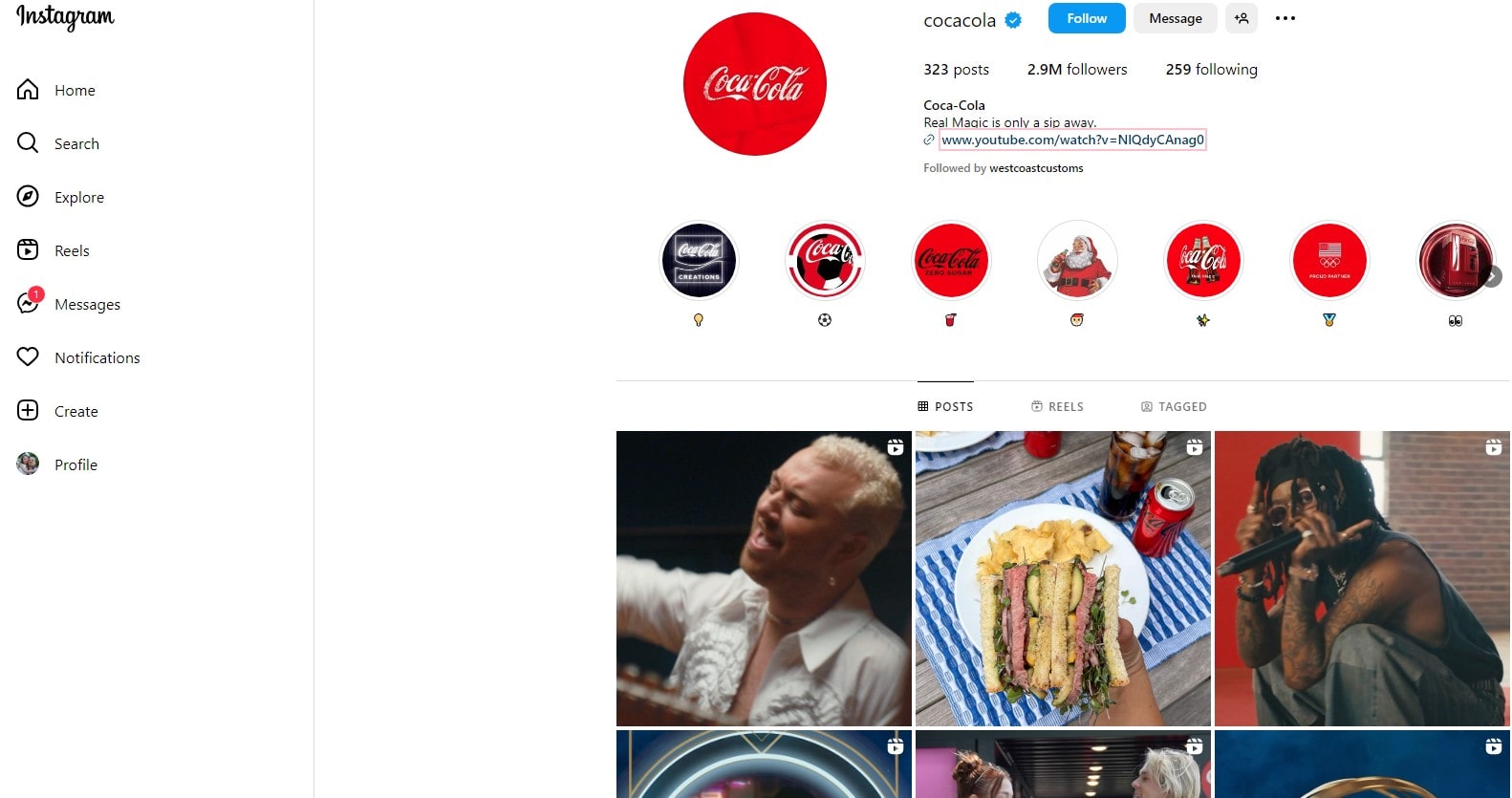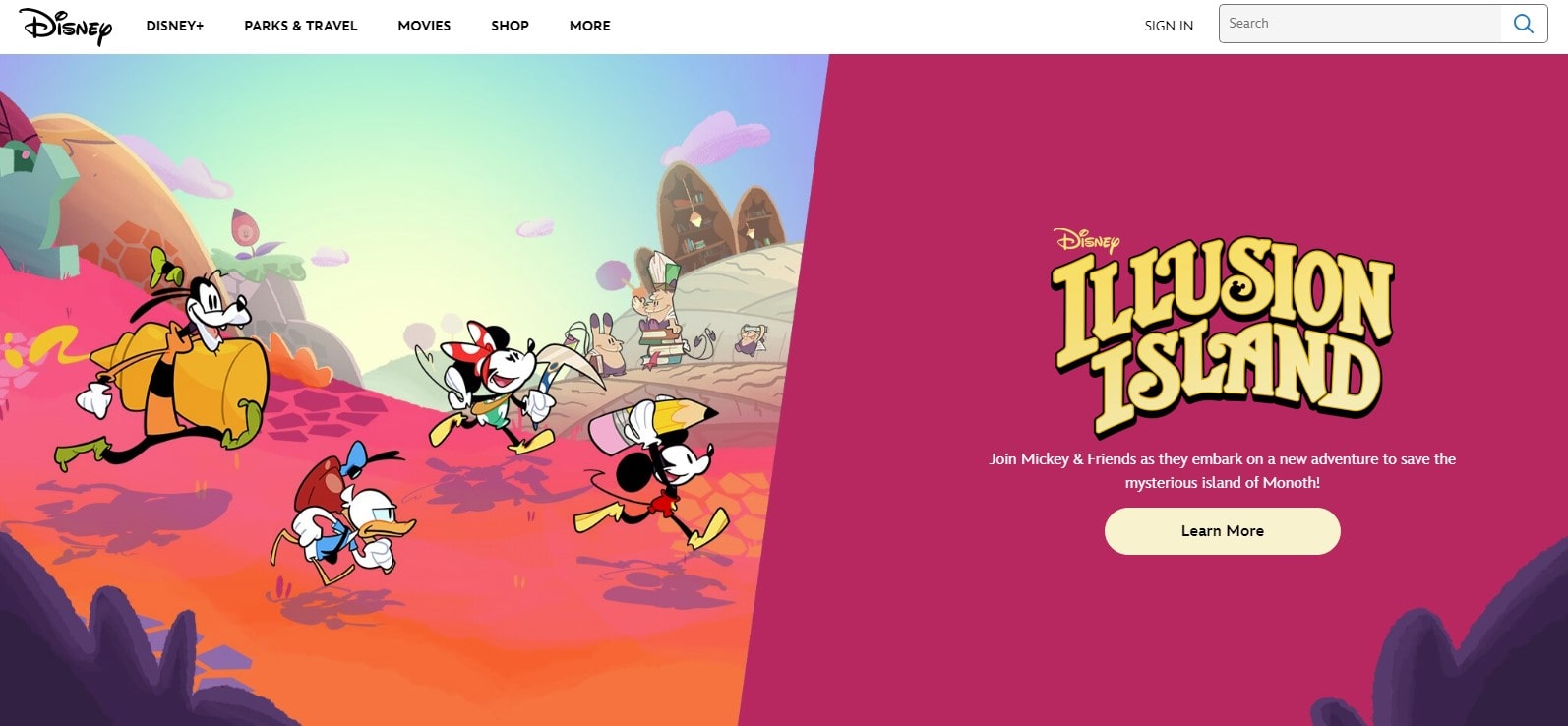Welcome to the exciting terrain of omnichannel and multichannel marketing strategies—a teeter-totter of immense opportunity for digital marketers worldwide ?. Omnichannel and multichannel, these are buzzwords that resound in the echo chamber of modern marketing. To unpack them, consider this: a grocery store offering both in-store shopping and online ordering is multichannel, but if the online system remembers your purchase history and suggests items based on past purchases—that’s omnichannel ?️.
Let’s break it down:
- Multichannel marketing involves interacting with customers on various platforms—each one operates independently. It’s like visiting different boutiques in a city, each with its unique offering.
- On the other hand, Omnichannel is a seamless and consistent interaction across all channels. Think of it as a vast shopping mall, where every store knows your preferences.

Armed with this understanding, it’s time to harness the power of these strategies to escalate your business growth ?. The Plerdy tool is an exceptional ally, providing detailed analytics for CRO & UX. Discover how Plerdy integrates with your multichannel or omnichannel strategy—get started today!
Introduction to Multichannel and Omnichannel Marketing
Multichannel and omnichannel marketing strategies are fundamental for businesses aiming to build strong relationships with their customers. The multichannel approach uses various platforms to reach customers – from emails and social media to mobile apps and physical stores. It’s like a bustling farmers market, each vendor vying for attention yet operating independently. On the other side, omnichannel marketing goes a step further, intertwining these platforms to provide an integrated, seamless experience. It’s akin to a well-orchestrated symphony, each section playing in harmony to produce a captivating performance.
In retail, for instance:
- Multichannel might involve advertising a product on Instagram, selling it on an e-commerce website, and providing customer support via email.
- Omnichannel, meanwhile, would seamlessly link these channels. Customers could click an Instagram ad, purchase the product on their mobile app, and then pick it up in-store.
Both strategies focus on meeting customers where they are, but it’s the level of integration and consistency that differentiates them.
Understanding Multichannel Marketing

Multichannel marketing uses email, social media, e-commerce, and physical stores to promote a company. It’s all about flexibility and choice for the customer. This approach is akin to casting a wide net, hoping to catch as many customer interactions as possible. A hotel, for example, might employ multichannel marketing through:
- Running ads on Facebook and Instagram
- Sending promotional emails to subscribers
- Using a third-party booking platform like Expedia
- Maintaining a direct booking website
Each channel functions independently, serving as an individual touchpoint for customer engagement. With multichannel marketing, businesses strive to reach a broader audience, offering customers their preferred method of interaction.
Definition of Multichannel Marketing
Multichannel marketing can be likened to a robust tree, each branch symbolizing a different platform for customer interaction. Emails, social media, mobile apps, e-commerce websites, and physical stores are used to reach and sell to clients.
Multichannel marketing lets people contact a business most comfortably, based on choice and flexibility. A fitness brand, for instance, might apply multichannel marketing by:
- Posting workout videos on YouTube
- Showcasing products on Instagram
- Sending newsletters with diet tips via email
- Offering a mobile app for personalized workout plans
- Selling products both in-store and on an e-commerce site
Each channel operates independently, yet each aims to captivate customers, enhancing brand reach and recognition. Although not as seamless as its omnichannel counterpart, multichannel marketing is a strategic method for broadening the customer base. It casts a wide net, catering to diverse customer preferences. Businesses employing this strategy effectively tap into various demographic segments, boosting their visibility and customer engagement, and driving business growth. Thus, multichannel marketing connects brands and customers across platforms.
Key Components of Multichannel Marketing
In the sphere of multichannel marketing, several core components come together to create a cohesive strategy designed to extend reach and drive customer engagement. First, the diversity of channels – including emails, social media, mobile apps, and more – forms the backbone of this strategy, enabling businesses to cater to varied customer preferences.
For instance, a boutique clothing brand might integrate:
- Social media for fashion trends and product promotion
- Email campaigns for personalized offers and updates
- An e-commerce website for convenient online shopping
- A brick-and-mortar online store for those preferring an in-person shopping experience
These individual channels, although operating separately, work towards a common goal – increasing visibility and providing diverse touchpoints for customer interaction.
Second, customized messaging and customer segmentation guarantee that the correct message reaches the right customer at the right time. In multichannel marketing, customizing content per platform and demographic segment is paramount.
Lastly, consistent branding across all channels helps maintain a recognizable identity, vital in a landscape teeming with competition. Although the degree of integration isn’t as comprehensive as in omnichannel marketing, the emphasis is on the brand remaining recognizable, irrespective of the platform.
In essence, multichannel marketing creates a dynamic, multi-faceted network where the customer can choose their preferred mode of interaction, marking it as a versatile and essential part of modern marketing strategies.
Benefits and Challenges of Multichannel Marketing
Multichannel marketing comes with a range of benefits, notably, the ability to expand brand presence across various platforms. This strategy lets companies communicate with varied audiences using their chosen channels, such as social media, email, apps, and in-store buying. For instance, a beauty brand leveraging multichannel marketing can reach makeup enthusiasts on Instagram, skincare devotees via email newsletters, and organic product lovers through a dedicated mobile app.
Benefits include:
- Broadened reach across various demographic segments
- Enhanced brand visibility and recognition
- Increased customer engagement via their chosen platform
- Potential for higher sales due to presence on multiple channels
However, multichannel marketing also presents a few challenges. Unlike the seamless integration in omnichannel marketing, multichannel efforts can sometimes result in disjointed customer experiences due to each channel operating independently. Additionally, tracking customer behavior and preferences across multiple platforms can be complex, making providing a tailored experience for each customer challenging.
Challenges encompass:
- Potential for inconsistent customer experience
- Difficulty in tracking customer behavior across platforms
- Complexity in managing and optimizing multiple channels
Despite these challenges, multichannel marketing remains an effective strategy for brands striving to maximize their reach and meet customers on their preferred platforms. Finding the correct mix and utilizing each channel’s skills improves marketing.
Understanding Omnichannel Marketing

Omnichannel marketing takes the multichannel approach and amplifies it, offering an integrated, seamless experience for customers across all platforms. Imagine a customer journey with a book retailer that includes:
- Browsing a book on their mobile app
- Receiving an email reminder about it
- Purchasing the book online
- Opting for in-store pick-up
In this journey, every touchpoint is interconnected and the transition from one platform to another is smooth. That’s the essence of omnichannel marketing – a symphony of well-orchestrated customer interactions, creating a unified and personalized shopping experience. It doesn’t just offer choices; it links them harmoniously for an elevated customer experience.
Definition of Omnichannel Marketing
In the vast landscape of customer marketing, omnichannel marketing stands as a beacon of integration and seamless customer experience. Rather than viewing each platform as a separate entity, as seen in multichannel marketing, omnichannel marketing perceives all customer touchpoints as interconnected parts of a whole.
Consider a coffee shop chain employing omnichannel marketing:
- A customer orders coffee through a mobile app.
- They receive an SMS notifying when their order is ready.
- Upon arrival, they pick up their order from a designated spot – a process facilitated by the app.
Each point in this customer journey is linked, resulting in a smooth, cohesive experience that remains consistent, irrespective of the platform or point of interaction.
This interconnectedness forms the crux of omnichannel marketing – an orchestrated marketing symphony designed to enhance customer experience, foster loyalty, and boost revenue. It highlights that customers should have a consistent, tailored, and seamless brand experience regardless of how they connect with it—app, website, social media, email, or in person. By providing a unified brand experience across all channels, omnichannel marketing transcends the boundaries of traditional marketing, placing the customer at the center of a brand’s universe.
Key Components of Omnichannel Marketing
Crafting a successful omnichannel marketing strategy requires several key components to ensure that each touchpoint works in harmony to deliver a seamless CX.
First, channel integration is vital. Unlike multichannel marketing, where each platform functions independently, omnichannel marketing necessitates that all channels – from social media to email, website, app, and even in-store interactions – work synergistically. A clothes business that syncs its online and actual locations lets customers check availability, reserve goods, and pick them up in-store.
Another crucial element is consistency. The brand message, visual identity, and customer service should be uniform across all channels, offering a consistent brand experience to customers. This consistency can build brand recognition and trust.
Next, data analytics plays a significant role in understanding customer behavior and personalizing their experience. Through data, brands can identify customer preferences and tailor their marketing efforts accordingly. For instance, a grocery chain can analyze shopping habits and send personalized offers through its mobile app.
Finally, customer-centricity forms the backbone of omnichannel marketing. Every strategy, campaign, or interaction should revolve around delivering a superior, personalized customer experience.
To recap, key components of omnichannel marketing include:
- Channel Integration
- Consistency
- Data Analytics
- Customer-Centricity
By mastering these elements, brands can orchestrate a truly omnichannel experience, outpacing the fragmented approach of multichannel marketing and reaping the rewards of improved customer loyalty and increased sales.
Benefits and Challenges of Omnichannel Marketing
Omnichannel marketing provides numerous benefits, key among them a unified, seamless customer experience. This approach lets customers effortlessly switch from one channel to another—say, from app to physical store—without missing a beat, enriching the overall shopping experience. It bolsters brand perception, boosts customer loyalty, and, in turn, amplifies sales.
For instance, a furniture retailer using omnichannel strategies might allow customers to browse products online, test them in-store, and later purchase via the app—all while maintaining a consistent brand experience. This continuity not only pleases the customer but also increases opportunities for engagement and sales.
Benefits of omnichannel marketing include:
- Enhanced Customer Experience
- Increased Brand Perception
- Boosted Customer Loyalty
- Amplified Sales
However, implementing an effective omnichannel strategy is not without challenges. Coordinating multiple channels to work in unison requires substantial time, effort, and resources. Collecting, analyzing, and applying customer data to personalize experiences across these platforms adds another layer of complexity. Brands might also face technical hurdles integrating various systems or adapting to fast-changing digital trends.
Despite these challenges, the potential payoffs of omnichannel marketing—stronger brand-customer relationships, greater customer retention, and higher profits—make it a vital strategy in modern marketing. Businesses navigating this landscape should brace for hurdles but focus on creating a customer journey that’s not just about transactions but about delivering value at every touchpoint.
Core Differences Between Multichannel and Omnichannel Marketing

Grasping the difference between multichannel and omnichannel is key to building solid, rewarding relationships with customers. Multichannel marketing engages customers across various platforms—email, social media, mobile apps, etc.—but each operates independently. Contrastingly, omnichannel marketing links these platforms to provide a seamless, integrated customer experience. Think of a coffee shop that allows you to order via an app, pay with a loyalty card, and pick up in-store—all while tracking your preferences and providing a tailored experience. It’s the difference between siloed channels and a cohesive, customer-centric strategy—each with distinct tactics, benefits, and challenges.
Customer Experience in Multichannel Vs. Omnichannel
When contrasting customer experiences in multichannel and omnichannel marketing, it’s about the degree of integration and personalization. Picture a customer shopping at an e-commerce fashion store. With multichannel marketing, they can browse via website, app, or social media. Each channel operates in isolation–separate shopping carts, uncoordinated promotions, and inconsistent branding.
- Shopping Cart: With multichannel, you add a shirt to your cart on the website but can’t see it on the app. Omnichannel connects these–the shirt is in your cart, regardless of platform.
- Promotions: You get an email offer for shoes in a multichannel scenario, irrelevant if you only buy dresses. Omnichannel sends promotions based on your purchase history, making them more relevant and enticing.
- Branding: A company’s social media may have a playful tone while its website is strictly professional in a multichannel setup. Omnichannel ensures a consistent tone across all touchpoints, reinforcing the brand identity.
So, omnichannel takes the idea of multichannel marketing, turns it up a notch, and infuses customer-centricity into every interaction. By linking every channel, the customer journey morphs into a harmonious, integrated experience where every touchpoint remembers the customer’s preferences, past interactions, and more–creating an interconnected, tailored experience that delights at every turn. In this personalized, interconnected ecosystem, customer loyalty flourishes and marketing efforts yield a greater return. It’s the evolution of multichannel marketing, fine-tuned for an era where the customer rules the roost.
Integration and Consistency: Multichannel Vs. Omnichannel
Integration and consistency are at the heart of omnichannel and multichannel marketing. Both strive to engage the customer across various channels, yet the manner they achieve this varies dramatically.
Imagine you’re running a health food store with both a physical location and an online shop. Multichannel marketing lets customers interact with your brand via these channels, but the interaction remains separate in each. Buy granola online, but want to return it at the store? Not possible. Need to apply an online coupon at the physical checkout? You’re out of luck. There’s a lack of integration.
- Integration: In an omnichannel approach, channels merge into one seamless system. Online purchases can be returned at the physical store, and online coupons apply in-store. The customer experience becomes fluid and flexible.
- Consistency: Additionally, branding, messaging, and promotions remain uniform across all channels with omnichannel marketing. The store’s Instagram page mirrors the website in terms of branding, voice, and promotions, creating a cohesive brand image.
In essence, omnichannel marketing refines the multichannel approach to create a customer-centric ecosystem where every channel interacts with the others. The customer’s preferences and past interactions influence their journey, regardless of the platform they choose to engage on. This creates a personalized, consistent experience that doesn’t just attract customers–it fosters loyalty and retention, maximizing the efficiency of marketing initiatives.
Role of Data in Multichannel Vs. Omnichannel Marketing
Data plays a critical role in multichannel and omnichannel, albeit in slightly different ways.
In multichannel marketing, data is often siloed by channel. Retail businesses may have data sets for brick-and-mortar stores, e-commerce platforms, and social media campaigns. Each channel operates independently, gathering its own data to analyze and inform strategies. This approach offers channel-specific insights, but it lacks a comprehensive view of the customer.
- Siloed Data: Collecting and analyzing data by individual channels can lead to missed opportunities and disjointed customer experiences.
On the other hand, omnichannel is about the convergence of data. The same retail business, applying an omnichannel approach, integrates data from all channels. This holistic view of the customer journey provides valuable insights about preferences, behaviors, and engagement across all touchpoints.
- Integrated Data: By unifying data from all channels, businesses can provide seamless and personalized experiences, increasing customer satisfaction and loyalty.
Here’s an example: A customer browses hiking gear online but doesn’t make a purchase. The next day, she visits the physical store. With an omnichannel approach, the sales associate could access her online browsing history, suggest the items she viewed, and even offer a personalized discount.
The role of data in multichannel and omnichannel marketing is more than just a tactical consideration—it defines how businesses understand their customers, customize interactions, and ultimately, how they deliver value. Businesses that leverage integrated data effectively can optimize customer experiences and make strategic decisions that fuel growth.
Real-world Examples of Multichannel and Omnichannel Marketing

Let’s dive into real-world examples of multichannel and omnichannel marketing.
First up multichannel marketing. Let’s take Gap, the clothing and accessories retailer. They thrive at multichannel marketing, coordinating physical stores, an e-commerce website, social media, and email campaigns. They efficiently manage each channel independently—each providing unique offers to customers.
- Gap: A multichannel champion that successfully engages customers across different platforms, driving sales through tailored offers per channel.
Omnichannel marketing shines in a different light. A standout example is Disney. They take customer engagement to the next level by integrating all their channels for a seamless, immersive experience. Consider booking a trip to Disneyland. You start by exploring options on their website, continue to their mobile app to book your tickets, receive a MagicBand bracelet that serves as a hotel room key, ticket, FastPass, and payment method in the park, and can even plan your day in the park using their interactive map. All touchpoints are connected—providing a truly unified customer journey.
- Disney: An omnichannel star, merging multiple channels to offer a singular, continuous, magical experience that captivates their audience.
Gap and Disney exemplify how both multichannel and omnichannel digital marketing strategies can effectively engage customers. While Gap uses distinct channels to reach its customers, Disney integrates all touchpoints into one unified experience—both approaches reflecting their understanding of their customers and commitment to delivering value.
How to Choose Between Multichannel and Omnichannel Marketing
Choosing between multichannel and omnichannel marketing isn’t about selecting a winner but tailoring your approach to fit your business and customer needs. You need to weigh several factors:
- Customer Preferences: Dig deep into customer data and insights. Do they prefer a seamless, interconnected experience or are they content interacting on distinct channels?
- Business Model: Consider your brand and how you operate. For instance, e-commerce retailers might lean towards an omnichannel approach for integrated online shopping experiences.
- Resource Availability: Implementing an omnichannel strategy can demand more resources—time, staff, and budget. Multichannel marketing might be more feasible for smaller businesses or startups.
For example, a boutique home décor brand might settle for multichannel marketing—maintaining an engaging Instagram profile for showcasing products, an email newsletter for updates and sales, and an e-commerce site for purchases. Each channel exists separately, with different customer offers.
On the other hand, a large tech company could implement an omnichannel strategy. Their customers might browse products online, compare reviews on third-party websites, consult with in-store experts, and ultimately purchase through a mobile app. Every touchpoint connects to provide a fluid customer journey.
In conclusion, understanding the nuances of multichannel and omnichannel marketing strategies helps businesses make informed decisions. Understanding your clients’ expectations, reviewing your business capabilities, and creating a marketing strategy that meets their needs and your goals are key.
Conclusion
As we wrap up this journey into the nuances of omnichannel and multichannel strategies, one thing is clear—the choice between these two approaches hinges on your business specifics, customer expectations, and operational capability ?. Your eCommerce strategy could lean towards multichannel—where each interaction platform operates independently, like different stores in a city, or it could be more akin to omnichannel—with seamless consistency across all channels, reminiscent of a large shopping mall that remembers your preferences ?️.
Notable examples such as Shopify’s multichannel functionality or Adobe’s integrated omnichannel experience underline this point while leading companies like Amazon, RingCentral, and others showcase the benefits of each strategy in action. Choosing multichannel or omnichannel depends on your brand’s vision and customers’ needs.
Unleash the full potential of your eCommerce strategy with the Plerdy tool—helping you refine your SEO and UX strategy for an optimised customer experience. Whether you’re a small merchant or a global giant, Plerdy empowers you to elevate your digital communication strategies to create memorable customer journeys. Start your free trial today, and experience the difference with Plerdy. Let’s cast a betteron eCommerce together ?.
